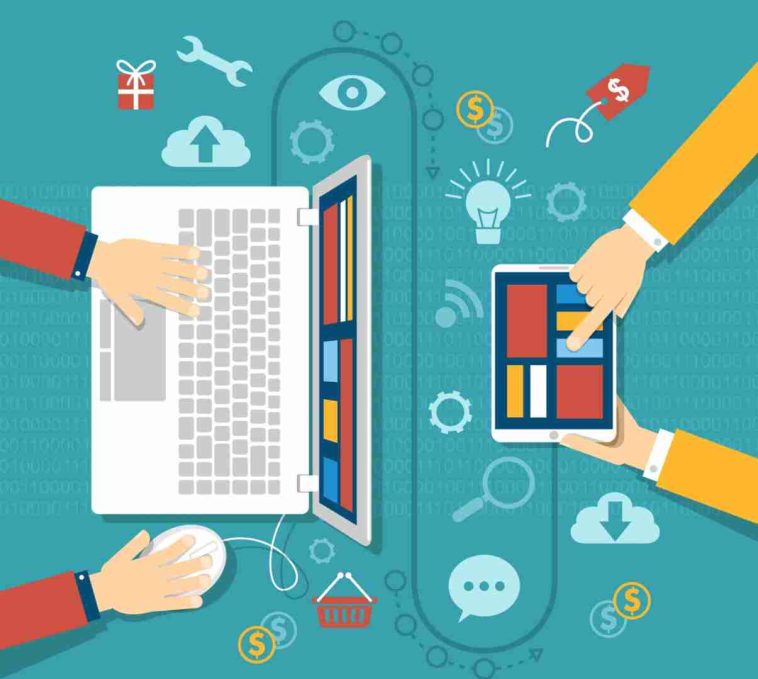Let’s face it—workplaces aren’t what they used to be. The days of everyone sitting in the same office, sharing updates over the water cooler, are long gone. Today, it’s all about digital workplaces, and managing this new environment takes a whole different approach. But don’t worry—if you’re feeling a bit lost, you’re not alone. This guide will help you understand exactly what digital workplace management is and how you can nail it for your team.
What is Digital Workplace Management?
Digital workplace management involves organising the digital tools, platforms, and resources that employees use to do their jobs. It’s not just about having tools like email, video conferencing, and chat apps—it’s about making sure they work together seamlessly to make collaboration as easy as possible. When managed well, a digital workplace empowers employees to stay connected and productive, no matter where they are.
So, what does all this mean for you? Let’s dive into the key components of digital workplace management and see how you can effectively set up a well-oiled digital work environment.
1. Establishing Clear Communication Channels
Communication is the bedrock of any successful workplace. In a digital setting, it’s crucial to establish clear communication channels that everyone understands and uses consistently. Are you using too many tools for communication? It might be time to simplify things a bit. Set up tools like Slack for quick conversations, Microsoft Teams for collaborative work, and Zoom for video meetings. The key here is consistency—every team member should know which tool to use for what purpose.
Moreover, have you thought about how an intranet platform like SharePoint can help make communication smoother? Taking a comprehensive look at SharePoint intranet solutions can give you a shared space for documents, updates, and projects, helping everyone stay on the same page without jumping between multiple platforms. It might just be the answer to streamlining all those different channels.
2. Streamlining Digital Tools
Too many apps cluttering up your workday? You’re not alone—this is a common struggle in many digital workplaces. When there are too many tools in use, people waste time figuring out where to find information or how to use a particular app. It’s frustrating, right? Streamlining the tools you use is essential to making your digital workplace manageable.
Take a good look at the tools you currently use. Do you really need separate apps for project management, communication, and file sharing? Sometimes, fewer tools that do more are better than juggling a dozen disconnected ones. Look for tools that integrate well together and cover multiple functions. This can reduce confusion, boost productivity, and make everyone’s day just a little bit easier.
3. Setting Up Proper Documentation and Information Sharing
Nothing slows down a digital workplace more than important information scattered across different platforms. If your team is constantly asking, “Where can I find that document?” it’s time to rethink how you manage information. Sound familiar? If so, you’re not alone.
Creating a centralised space for storing and sharing information is key. Intranets or digital knowledge bases are great for this purpose. Imagine having a single place where employees can access essential documents and get answers to their questions without chasing down email threads or Slack messages. Wouldn’t that make everything so much simpler?
4. Fostering a Culture of Collaboration
Just because your team is digital doesn’t mean collaboration should take a back seat. Do your employees feel comfortable sharing their thoughts and ideas? Are they able to reach out when they need help? Encouraging a culture where everyone feels safe giving feedback and working together is key to making a digital workplace thrive.
Think about setting up regular check-ins or even virtual coffee chats to keep the human connection alive. Collaborative platforms like Microsoft Teams, which allow for group calls, chats, and document sharing, can make it easier for everyone to stay in sync. But remember, it’s not just about the tools—it’s about making people feel comfortable reaching out to each other, and ensuring everyone feels heard and involved.
5. Emphasising Security and Accessibility
In the digital workplace, security can’t be optional. Your team needs access to the tools they require, but you also need to protect sensitive information. That means using strong passwords, enabling two-factor authentication, and ensuring your tools comply with data protection standards.
Have you talked to your employees about best security practices? It’s important that everyone knows what they should and shouldn’t do to keep information safe. Make this a part of your onboarding process and regular training sessions. The goal is to make sure everyone understands the role they play in keeping the digital workplace secure.
6. Using Analytics to Improve Efficiency
You can’t improve what you don’t measure. Have you ever thought about how analytics could help you optimise your digital workplace? Analytics tools can show you how your workplace is functioning. Are there bottlenecks slowing your team down? Are people not using certain tools effectively?
By tracking how tools and platforms are used, you get valuable insights that help you make data-driven decisions to improve efficiency. If the data shows that a particular collaboration tool is rarely used, consider whether it’s still needed or if there’s something better out there. Analytics help you refine your digital workplace and make it work better for everyone.
7. Keeping the Human Touch
One of the main challenges of managing a digital workplace is maintaining a sense of human connection. It’s easy for employees to feel isolated when they’re working remotely, which can lead to low morale and decreased productivity. Are you making an effort to check in on your team regularly? It doesn’t always have to be about work—sometimes a simple, “How are things going?” can go a long way.
Virtual happy hours, team-building exercises, and one-on-one check-ins can all help to make sure your team feels valued and connected. Remember, it’s not just about getting the work done—it’s about making sure your team enjoys doing it.
Moving Forward with Confidence
Digital workplace management can feel overwhelming, especially at first. But with the right steps, you can turn it into something that works smoothly for you and your team. Establish clear communication, centralise your resources, and create a culture of support and connection. By putting in a bit of effort, you can build a digital workplace that’s not only efficient but also enjoyable.





GIPHY App Key not set. Please check settings